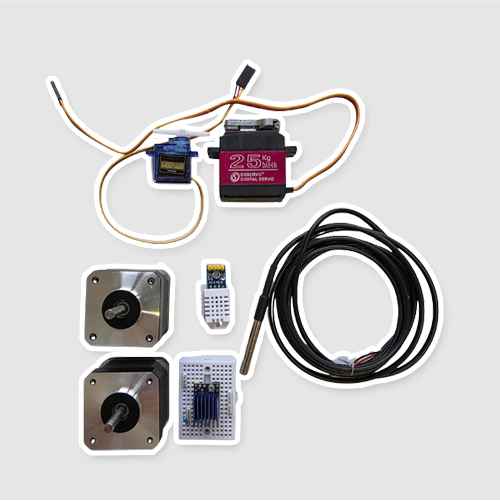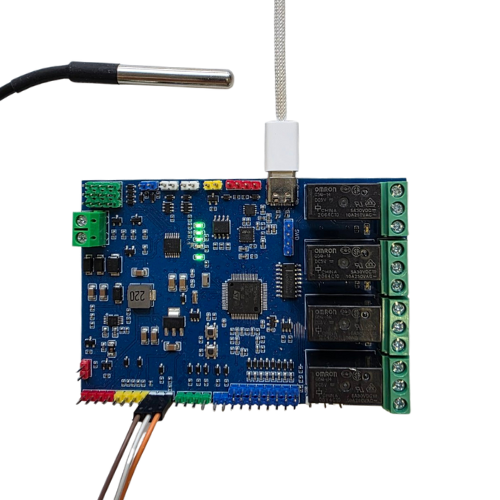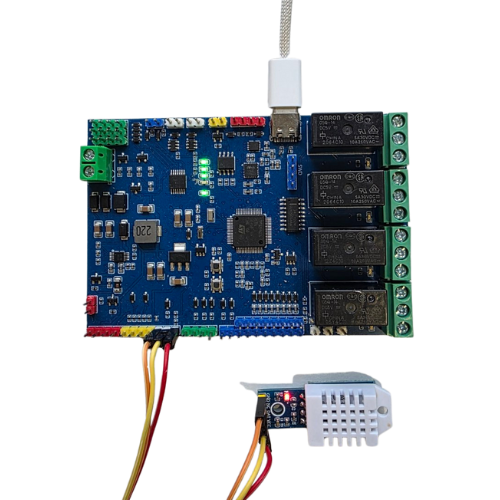
In May 2025, R1BBIT ONE expanded its functionality with support for popular sensors and actuators. This marked another step toward turning the board into a versatile platform for both learning and practical applications.

The board now works with the DHT20 temperature and humidity sensor and the DS1820 temperature sensor. With this addition, R1BBIT ONE can already operate as a simple home weather station: it supports one DHT20 and up to eight DS1820 sensors simultaneously. Data from these sensors can be read, processed, and displayed directly through the application, allowing users to monitor indoor environmental conditions in real time.
Alongside sensor integration, we also introduced support for servo motors and stepper motors through the board’s PWM ports. This means users can now control movement-oriented components — from positioning small servos to driving stepper motors in automation scenarios. These capabilities significantly expand the range of projects that can be built, from robotics experiments to home automation systems.

The focus of this development stage was not only to add compatibility, but also to ensure ease of use. Connecting a sensor or motor requires minimal setup, and control commands can be issued directly from the scripting environment or through the app’s graphical widgets.
With the new features, R1BBIT ONE has grown beyond a test prototype and started to resemble a practical tool. The ability to act as a home weather station while also managing mechanical movement illustrates the flexibility of the platform and its potential to combine multiple roles within a single board.
The May update highlighted the steady progress of the project: from basic connectivity in April to real sensor and motor integration in May. Each step brings R1BBIT ONE closer to becoming a complete solution for education, prototyping, and automation.
Example script
VAR T[1] //Array of one element
VAR T1
VAR H1
DHT_INIT(T1, H1, 1000)
DS1820_INIT(T, 1000)
WHILE(1) // Infinite loop
PRINT “Temperature DS1820 “, (T[1]*9/5+32), “F”
PRINT “Temperature DHT20 “, (T1*9/5+32), “F. ”, “Humidity “, H1, “%”
PAUSE 1000 // Pause for 1 second
WEND

